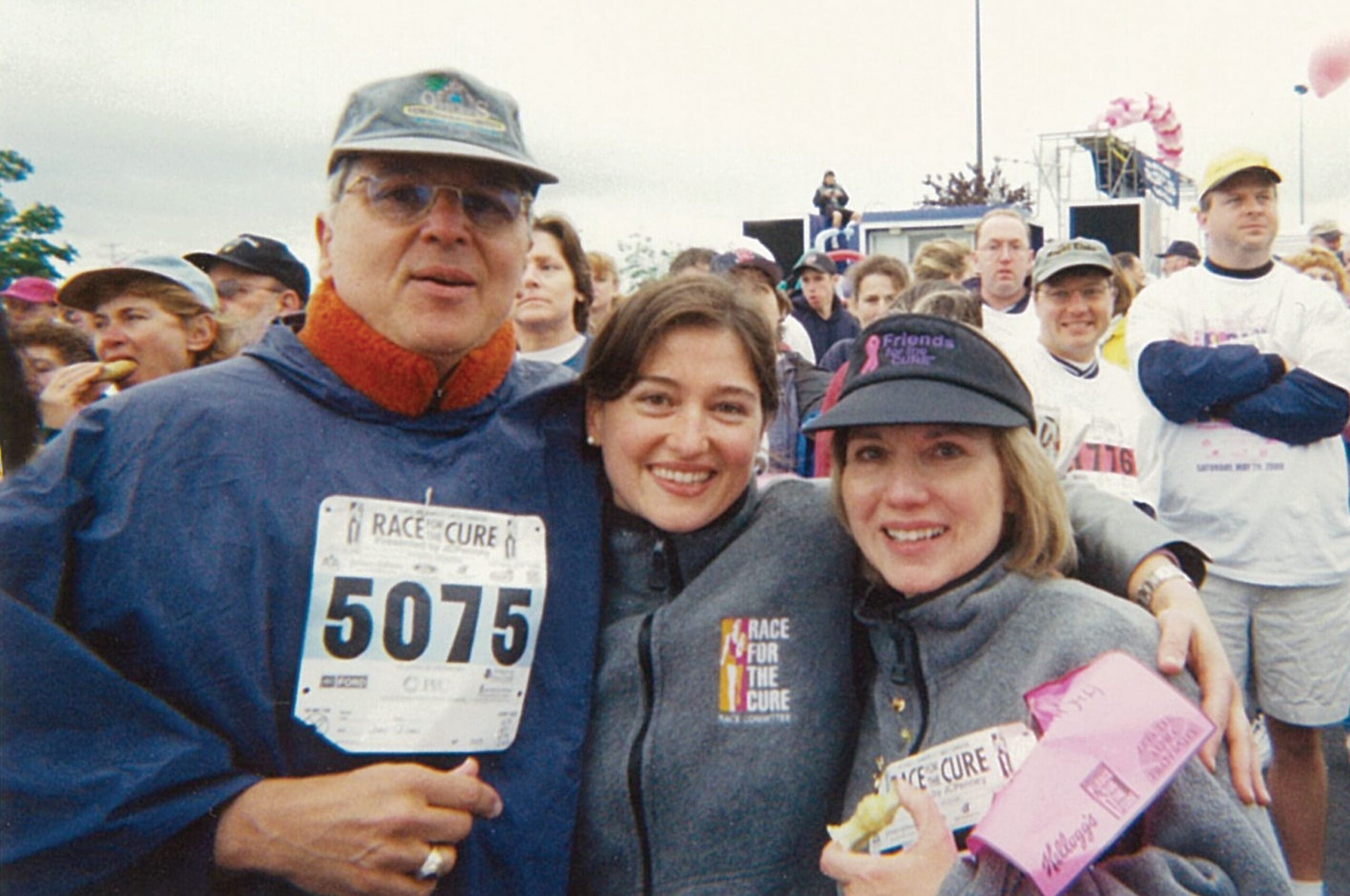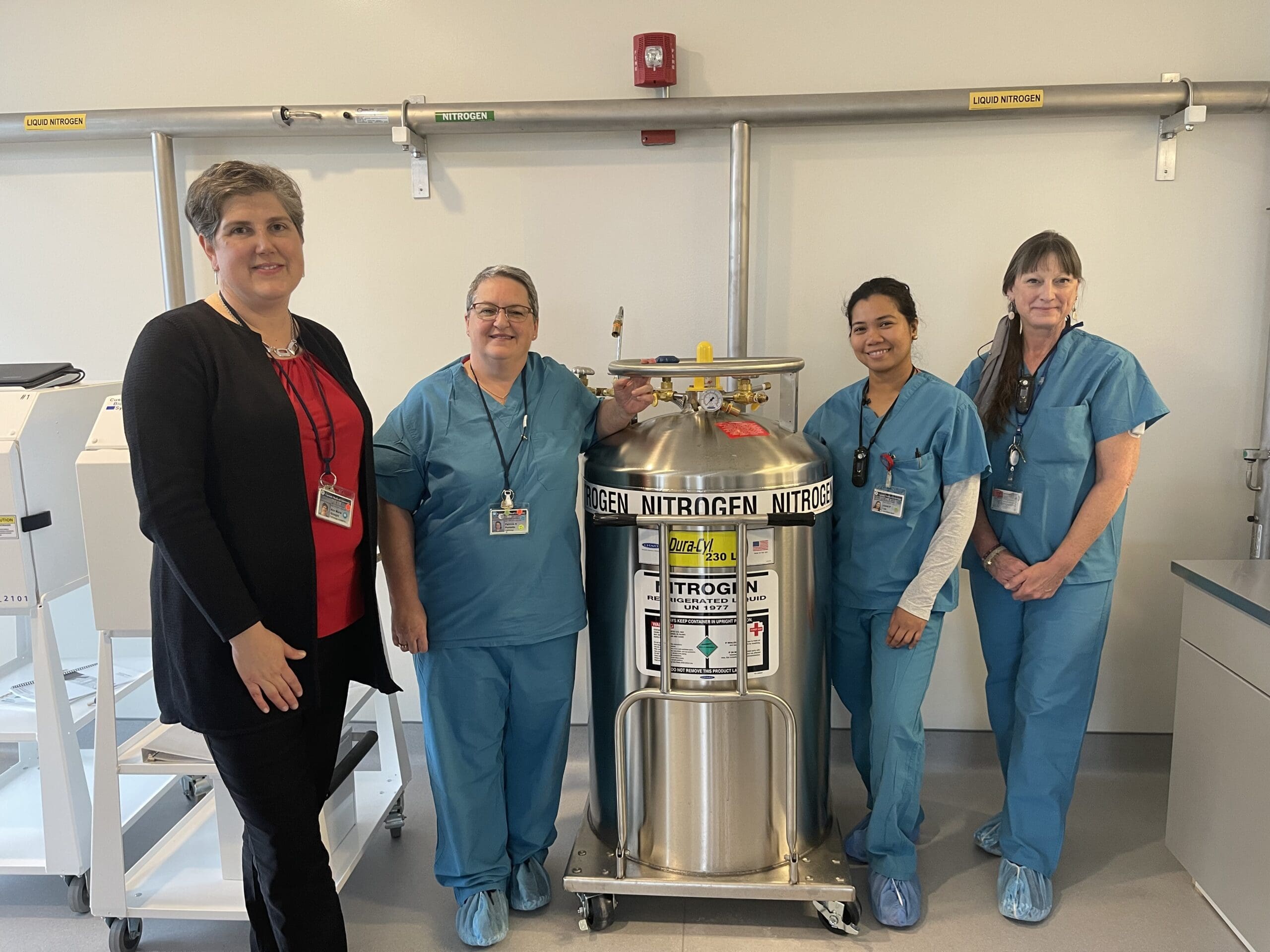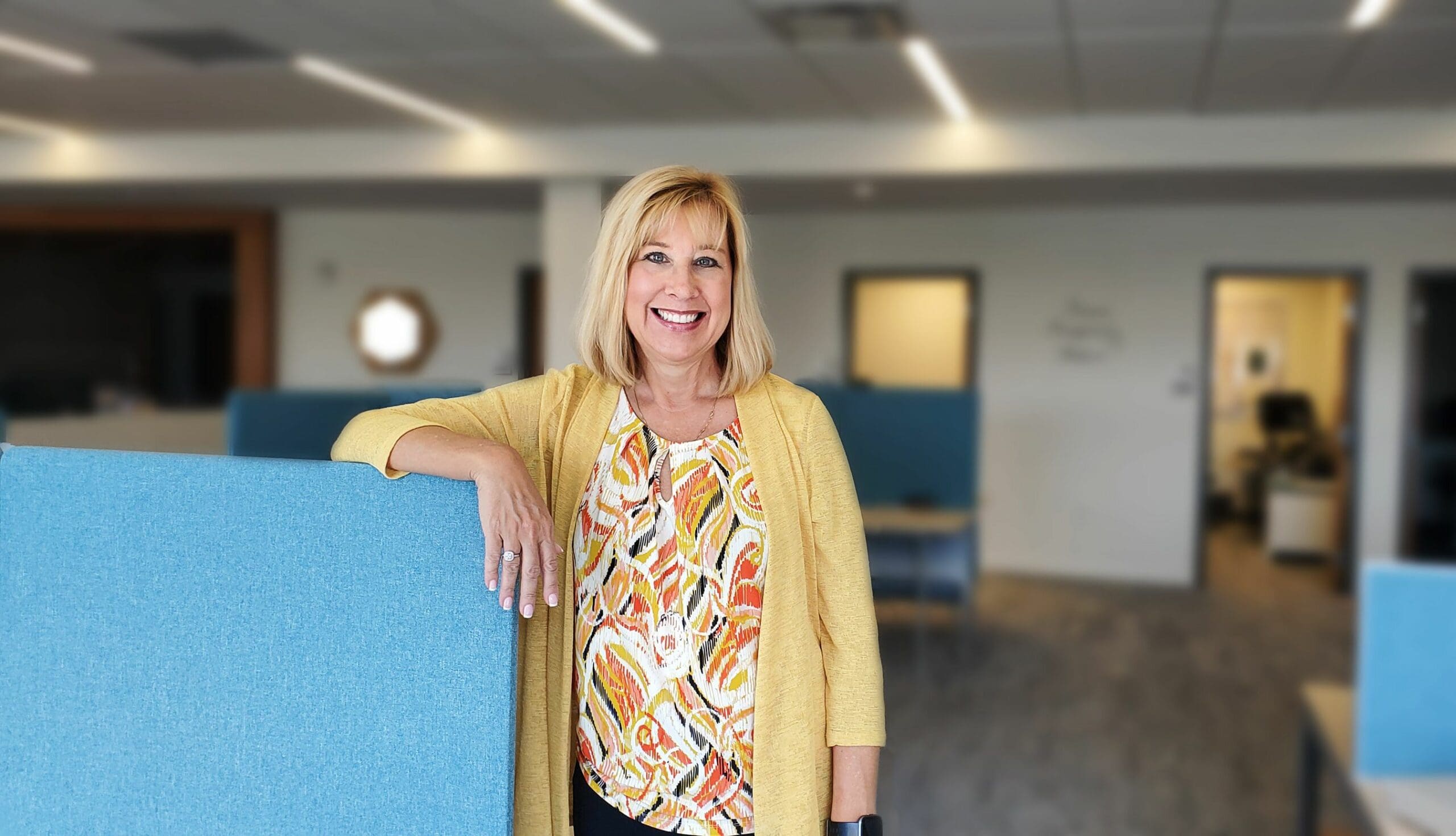This month, Syracuse Woman Magazine caught up with the staff at St. Joseph’s Breast Care Program. They taught us about their roles in the program, and helped demystify the process. Answers have been edited for length and clarity.
Mary Kapfer
Nurse navigator in women’s imaging
SWM: Explain your role in the process of helping a woman diagnosed with breast cancer.
Mary: I see them at the time of the abnormal imaging, which is before they are diagnosed with breast cancer. I explain the abnormal imaging, i.e. what their mammogram or sonogram shows, as well as the biopsy process. I may be scheduling their biopsy, spending time with explanation and reassurance the day of the biopsy, and getting their results to them or their provider as soon as they are available. I may also explain needle localization and sentinel node injection, which are procedures performed in radiology the day of their surgery.
SWM: What’s the most common question you get from patients?
Mary: Patients ask if they are going to have a mastectomy if cancer is found.
SWM: Is there a common fear or misconception you’d like to dispel?
Mary: Patients come for their biopsies very afraid of pain. We use local anesthetic and do all we can to make it as comfortable as possible. Most patients tolerate the biopsy well, with little pain or discomfort.
Jennifer Michales
Nurse navigator for surgery and oncology
SWM: Explain your role in the process of helping a woman diagnosed with breast cancer.
Jennifer: As the breast navigator, I assist patients in coordinating their care and help to enhance communication between patients and their health care team. I help to remove barriers to care and ensure they receive the support and care they need, as well as help to decrease their fear and anxiety.
SWM: What do you say to a patient who’s scared?
Jennifer: One of the biggest fears patients have is the fear of the unknown. Providing information to patients empowers them to make choices and play an active role in their treatment and recovery.
SWM: Is there a common fear or misconception you’d like to dispel?
Jennifer: A common fear or misconception is that a diagnosis of breast cancer is a death sentence. Breast cancer treatment and diagnosis have advanced significantly over the past 10 years. Cancers are being diagnosed earlier and treatments are improved, with fewer side effects.
Lisa Cico
Dr. Kara Kort’s nurse practitioner
SWM: Explain your role in the process of helping a woman diagnosed with breast cancer. What’s the hardest challenge in your job?
Lisa: As a nurse practitioner, I am often one of the first providers to deal with a patient who has an abnormal mammogram or other abnormal breast imaging. I review the imaging findings with them, explain the process of a biopsy, as well as what a followup would entail.
Even though it is only a day or two before the results are known and the patient called, patients tell me it can feel like forever. The waiting and wondering can take its toll. Certainly when a patient is told they do indeed have breast cancer, it’s often shocking, even if they’ve prepared themselves. This never gets any easier, and is certainly one of the most difficult parts of this job.
Another confounding issue is that information available is not always accurate. So, I always caution patients to utilize appropriate websites. Many times, patients tell me about the difficulties in treatment of someone they know who had been treated for breast cancer; and in many cases, it’s not the same course of treatment the patient herself may require.
SWM: Is there a common fear or misconception you’d like to dispel?
Lisa: We see patients who feel they are at high risk for the development of breast cancer, when often, they are not. They may have had a family member who had breast cancer, but this does not always mean they are at high risk of developing breast cancer themselves. We have a few risk calculation models which can help us determine whether someone is a high risk patient, and if so, we can set them up in a program to monitor them more closely.
Mya Robertson
Nurse practitioner
SWM: Explain your role in the process of helping a woman diagnosed with breast cancer.
Mya: I like to think of my role as an advocate for patients. There are a few situations in which I am the first provider they meet in the office. They come in to be seen and have a biopsy done the same day. I call them with the results and explain the details. When they follow up with the surgeon, I come in and see them. In many cases, I see patients post-operatively with the surgeon. I continue to follow our breast cancer patients routinely, to check for local recurrence. I also do genetic counseling and testing within the office for all the patients who qualify.
SWM: What’s the hardest challenge in your job?
Mya: Combating the fear patients have about breast cancer. Even patients who are not diagnosed but have a strong family history have such fear about the disease. I try to reassure them and alleviate their anxiety as much as I can.
SWM: Is there a common fear or misconception you’d like to dispel?
Mya: The most common misconception I hear from patients and even some family practice physicians is that if a patient tests positive for a broken gene (BRCA 1 or 2), they need to have bilateral mastectomies. Every patient is different and there are so many genes out there that may increase your risk of cancer, but by varying degrees. There are many options: increased surveillance, medicine — and yes, surgery is an option, but it’s not the only option.
Dr. Kara Kort
Medical director
SWM: Explain your role in the process of helping a woman diagnosed with breast cancer.
Kara: While I am a surgeon, I often feel like surgery is only one small part of my role in my relationship with a cancer patient. One of my biggest roles is educating patients. We underestimate how important it is to really explain the disease to patients. If explained clearly, you can help patients understand cancer, and how and why we treat it. Most patients really appreciate it.
SWM: What’s the most rewarding part of your job?
Kara: Obviously, it’s rewarding as a surgeon when patients are pleased with surgical results or your work’s cosmetic outcome. However, it’s even more rewarding when a patient walks in for the first time with a new diagnosis of cancer — terrified, often tearful — and after we sit and talk, she leaves saying, “I feel so much better now that I understand.”
It’s also a privilege to help during part of someone’s toughest times. A new cancer diagnosis almost always comes out of nowhere and is terrifying. I hate seeing patients and their families sad and scared, so, I try to make it a little less so. Our whole team has that same mentality. It’s our job to not just medically and surgically care for patients — but to help emotionally and walk them through the process.
SWM: Is there a common fear or misconception you’d like to dispel?
Kara: Breast cancer is the most common cancer in women, so, there’s a lot of it out there. But breast cancer is one disease that can vary tremendously, from a tiny finding that barely needs treatment to one that may require aggressive surgery and chemotherapy. I think when most women are diagnosed and hear the words “breast cancer,” they assume the latter. Certainly, some patients do die from breast cancer and sometimes it comes back, but most women do very well after treatment. It’s certainly scary when initially diagnosed, but that’s why it’s so important to explain everything and help them understand. SWM




